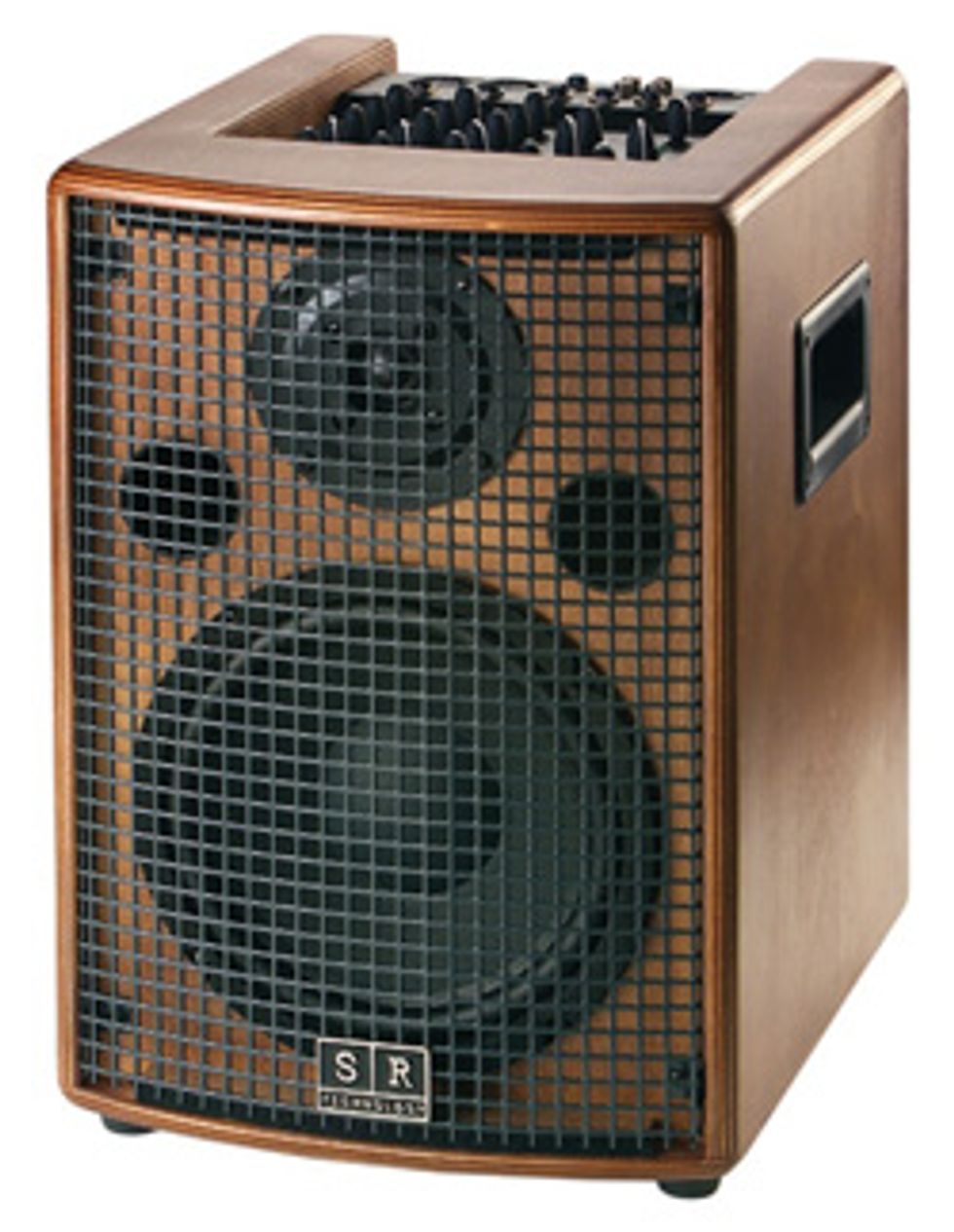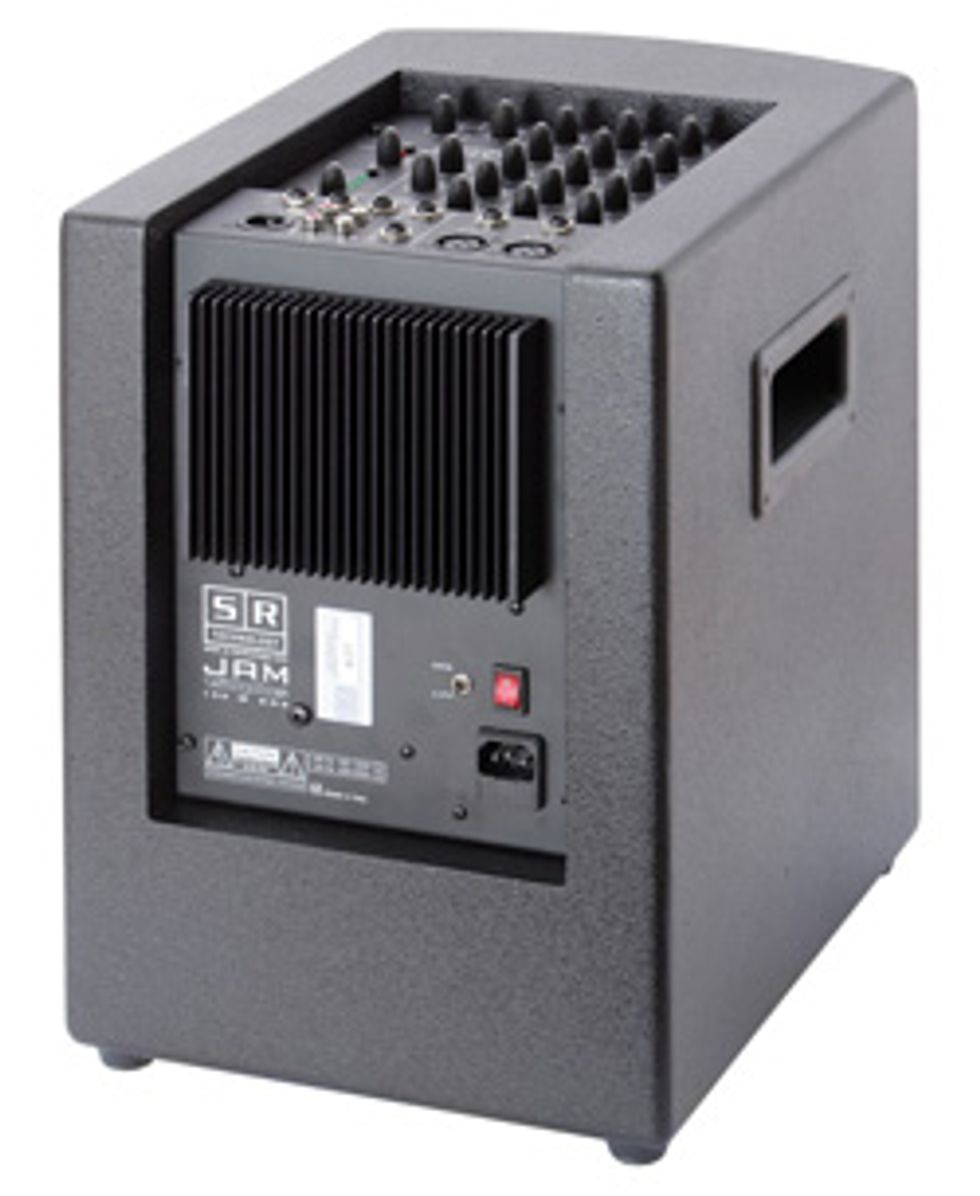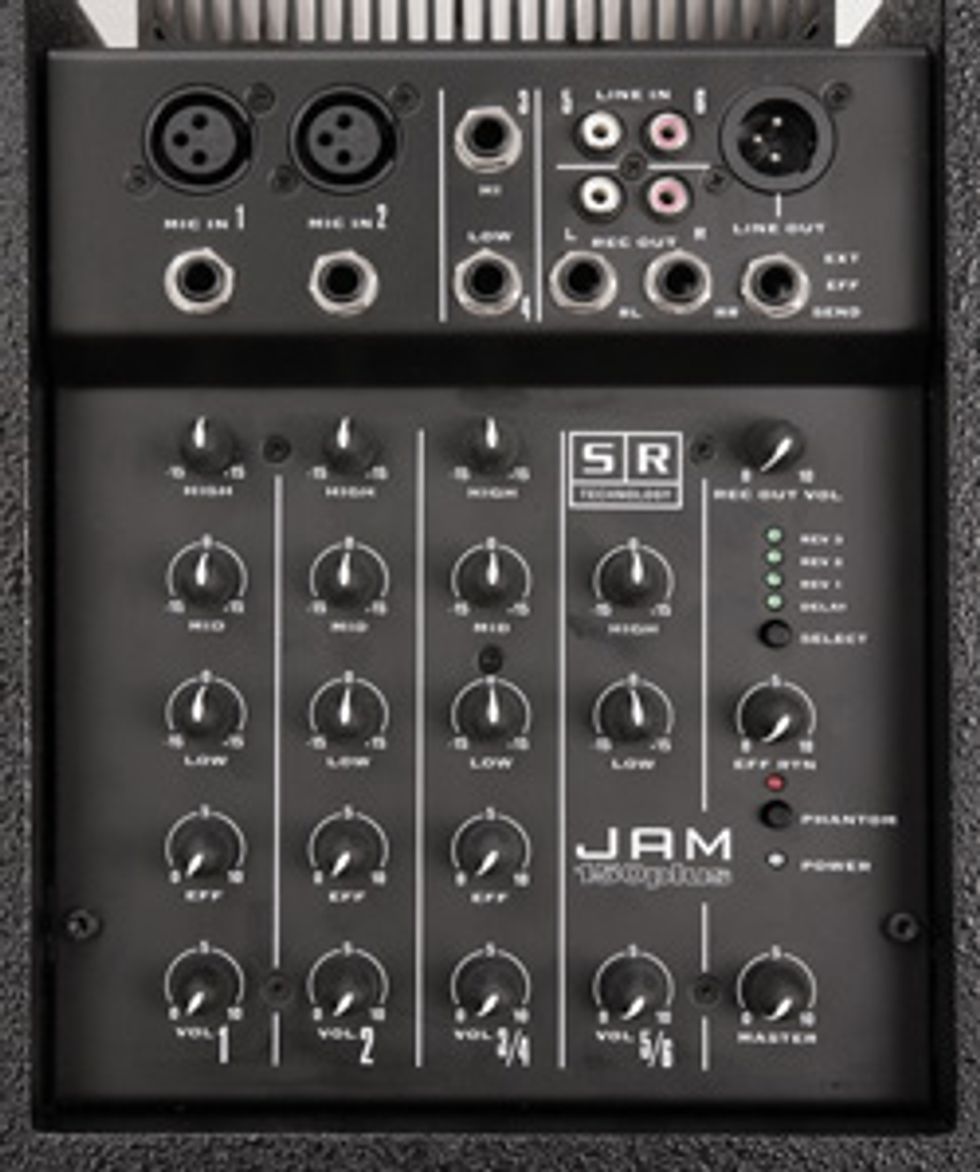 | |
| Download Example 1 Dry | |
| Download Example 2 Reverb | |
| Download Example 3 Delay | |
If plugging the Godin Multiac in direct yielded very usable sounds, going into the Jam brought out its best. Plugged into channel 1 of the Jam with all of the settings flat and the Volume and Master Volume set to noon, a new body and warmth opened up on the Multiac that was incredibly musical. At this point, the sonic differences of each of the Mic Imaging settings became much more apparent, and all of them showed their true tonal colors. Cranking the amp to full up revealed no feedback from the
 guitar whatsoever and the amp remained fairly quiet. There is a point on the Master past 3 o’clock that a level of hiss comes into play, but nothing too bad in terms of getting in the way. At that volume things are getting fairly loud, and the hiss was of little concern to me. Grabbing the EQ on the amp allowed for musical but not precise adjustments, much like on a Mackie 1202 or a good stereo system. I believe this is a smart design, because it doesn’t allow for extreme EQ mistakes to be made that would negatively color the sound due to user error. Back in the old days, a lot of equipment was built with a simple interface that always offered a musical choice, but over time that simplicity has been replaced with complex setups allowing for massive flexibility… and potentially disastrous settings. I prefer the set-it-and-forget-it nature, as it makes getting a great sound very easy. That said, it would be nice to have a graphic EQ onboard to aid in just a bit more overall adjustment when necessary.
guitar whatsoever and the amp remained fairly quiet. There is a point on the Master past 3 o’clock that a level of hiss comes into play, but nothing too bad in terms of getting in the way. At that volume things are getting fairly loud, and the hiss was of little concern to me. Grabbing the EQ on the amp allowed for musical but not precise adjustments, much like on a Mackie 1202 or a good stereo system. I believe this is a smart design, because it doesn’t allow for extreme EQ mistakes to be made that would negatively color the sound due to user error. Back in the old days, a lot of equipment was built with a simple interface that always offered a musical choice, but over time that simplicity has been replaced with complex setups allowing for massive flexibility… and potentially disastrous settings. I prefer the set-it-and-forget-it nature, as it makes getting a great sound very easy. That said, it would be nice to have a graphic EQ onboard to aid in just a bit more overall adjustment when necessary. Moving on, the Jam offers up a great little set of effects, courtesy of Alesis. Like the Multiac’s Mic Imaging settings, there are also four different effects to choose from: three reverbs and a delay. Working exactly the same as an effects send/return, you can adjust the amount of effect per channel and the overall wetness of the signal with the EFF RTRN control. All of the reverbs sounded quite good as basic reverbs go, but I found the delay to be a bit of an odd choice because of its fairly fast
 and pronounced repeat. There is no control over the settings, other than volume, and only one can be used at a time—but this is really more of a freebee if you don’t want to carry around an external effects device. Of course, they thoughtfully included a true effects loop, in case you do decide to use a high-end device, and when plugging in an external unit the Alesis effects are simply taken out of the circuit. Nice touch!
and pronounced repeat. There is no control over the settings, other than volume, and only one can be used at a time—but this is really more of a freebee if you don’t want to carry around an external effects device. Of course, they thoughtfully included a true effects loop, in case you do decide to use a high-end device, and when plugging in an external unit the Alesis effects are simply taken out of the circuit. Nice touch! Because there are six channels on the Jam, I took the time to plug in a mic, my iPod and the Multiac to play through it like I would at a solo coffeehouse gig. Just using the onboard effects and a little EQ, I was easily able to put together a great mix of music, voice and guitar that would project nicely in a smaller environment. It was surprising to hear the fullness of the amp, covering such a broad frequency spectrum through just an 8" woofer and small tweeter yet retaining the best properties of the Multiac’s tone. Pushing the amp too far with this setup did reveal that the Jam is “only human,” and the speaker and power configuration work well as long as you respect their limits. The good news is the XLR Master Out is just one step away from plugging into the main system at any club, giving you the power needed for the gig but with you in charge of your mix. Brilliant.
Buy if...
portable, lightweight and flexible is your aim.
Skip if...
you need more power.
Rating...
Street $999 - SR Technologies - srtechnology.co.uk |




![Rig Rundown: Russian Circles’ Mike Sullivan [2025]](https://www.premierguitar.com/media-library/youtube.jpg?id=62303631&width=1245&height=700&quality=70&coordinates=0%2C0%2C0%2C0)


















